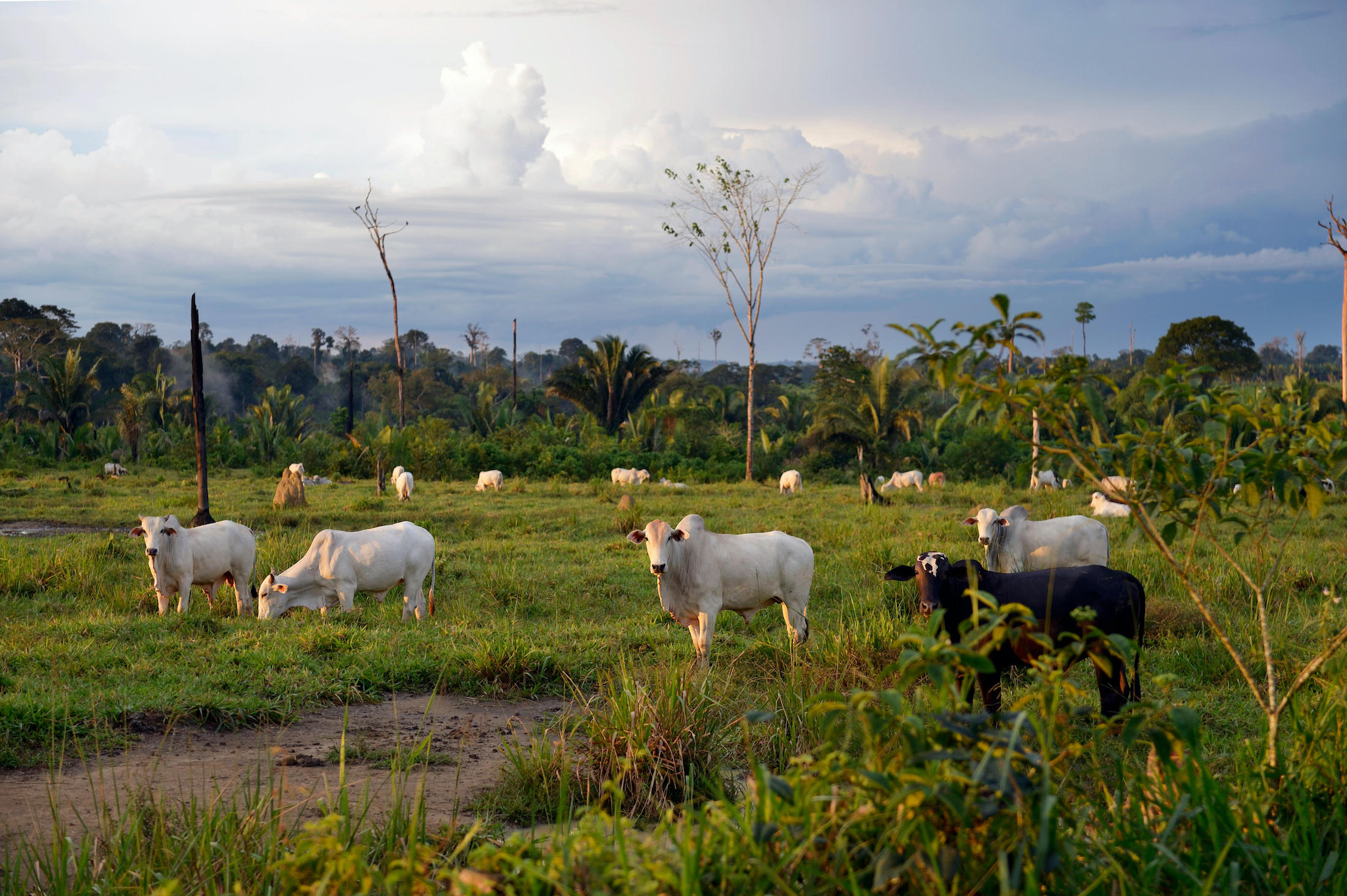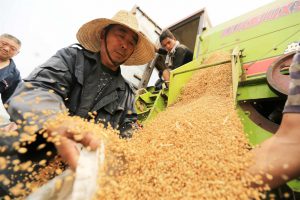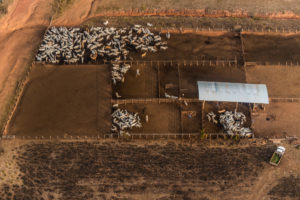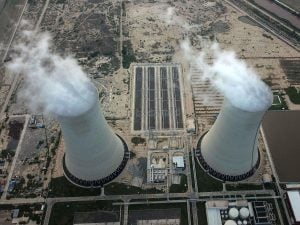On 21 March, World Forest Day, a short video on conserving global forests sparked angry protests on the Chinese internet, and was taken down by its makers the next day.
The five-minute film was a joint effort by PaperClip, a group which produces educational films, and the WWF. It showed how farming for livestock and soybean is destroying forests in the Amazon region, in an attempt to encourage consumers to choose products certified sustainable. But linking the purchase of meat, eggs and milk by Chinese shoppers with deforestation sparked accusations that it was “insulting China”.
This is not the first time advocacy of environmentally friendly consumption has received a backlash in China. With Chinese markets having an increasing impact on the global environment, efforts to guide sustainable consumption must navigate the fraught terrain of online opinion, rubbing up against nationalism and the “right to development”.
‘Insulting China’?
The video was provocatively titled How to Quickly Destroy the World’s Forests. It was first challenged on Bilibili.com, a video streaming site popular with young Chinese people, where Paperclip is well-known as a producer of science and technology content. A video Paperclip published on 2 February, Everything You Need to Know About the Coronavirus, provided detailed and accurate information on the epidemic and was watched over 100 million times. A mere seven weeks later, Paperclip was being attacked on the platform, for a video about protecting forests.
The film starts by describing how human activity has damaged forests over the last two decades. Citing the WWF’s 2015 “Living Forests Report”, it links production of beef and soy to the destruction of the Amazon rainforest. It describes this global chain linking production and consumption as “the most efficient forest-elimination machine” and points out the role of Chinese markets. According to the voiceover: “Brazil can’t cut soybean farming, because it needs to sell to the world’s biggest buyer, China.” The film also discusses other commodities associated with deforestation: “The production, trade and consumption of palm oil, rubber, timber and paper impacts on forests in places including Sumatra and Kalimantan.” Finally, the video suggests opting for products with sustainability certification to avoid becoming inadvertently involved in deforestation.
Within 24 hours, the video had sparked a huge backlash that spread to other social media platforms such as Weibo.
The attacks focused on whether it was fair to link consumption of meat, milk and eggs in China with destruction of the Amazon rainforest. “We’ve only had meat to eat for a few years, and it’s us that have harmed the planet?” asked one poster. Many contrasted per capita meat consumption in China and the US, where people eat twice as much, and mainly beef which has a far larger carbon footprint than the pork favoured in China.
The anger did not stop there. Some called Paperclip’s politics into question, after ploughing through its old videos and finding some in which Taiwan island was not clearly visible on what were supposed to be maps of China. Others pointed out that sustainability certifications charge fees, so “It’s all commercial.”
Paperclip then removed the video and made a statement: the video had not blamed China and the uses of “we” referred not to Chinese people, but to humanity as a whole.
Before being taken down, it was copied and published on YouTube.
Who changes first?
Jian Yi, founder of non-profit the Good Food Academy and director of the documentary What’s for Dinner, told China Dialogue that environmental advocacy needs to avoid “ascribing responsibility to any particular group” as this “will always make someone uncomfortable”.
This isn’t the first online controversy over calls for lower meat consumption in China.
In March 2019, international organisation WildAid launched its Less Meat Is My New Dish campaign in China, calling for lower meat consumption to reduce greenhouse gas emissions. Chinese film stars featured in the campaign, online and on posters in subways and airports.
The adverts were soon challenged by internet opinion leaders. In a now-deleted Weibo post, popular science blogger Scientific Future Man asked: “Why are Americans, beef-eaters with higher per-capita carbon emissions, always banging on about how Chinese people should eat less pork?” before pointing out that WildAid is an American organisation and saying such advocacy has “other motivations.” Guancha.cn soon joined in, with an article asking: “What was this foreign organisation thinking in asking Chinese people to eat less meat to protect the Earth?” and describing the adverts as “repulsive”.
Businesses using health and the environment as selling points have also wandered into the minefield. On 8 January this year, in an article on the prospects for meat alternatives in China the New York Times quoted Pat Brown, CEO of plant-based “meat” manufacturer Impossible Foods: “Every time someone in China eats a piece of meat, a little puff of smoke goes up in the Amazon.” Nationalist media outlets Global Times and Guancha.cn complained America’s environmental responsibilities were being shifted onto China’s shoulders.
Fang Kecheng, assistant professor at the Chinese University of Hong Kong’s School of Journalism and Communication, expects this atmosphere to continue. In the past, Chinese nationalism was based around websites and forums, with limited reach and regular participants. But now a focus on building traffic has changed this. “There’s profit to be made by playing up conspiracy theories,” Fang said, adding that large numbers of accounts are chasing the nationalist topics that resonate with the public.
Reliance on overseas agribusiness
Since 1961, per capita meat consumption in China has increased by a factor of 17. Yet while the average Chinese person ate 61 kg of meat in 2017, the average European consumed 83 kg and the average American 124 kg, according to UN figures.
That Chinese average hides urban/rural and class differences within the country. In 2016, the State Council’s Development Research Centre predicted that meat consumption by China’s city-dwellers will peak as soon as 2022, at 85 kg per year. Meanwhile, in rural China a peak is not expected to arrive until 2030. So while some Chinese people may be eating as much meat as Europeans, others are still getting less than they want.
Interestingly, while China’s overall meat consumption is increasing, in the US and Europe it is levelling off or falling in response to health, environmental and climate concerns. For example, in UK supermarkets last year beef sales fell by 4% and pork by 6.4%, while meat-free alternatives rose 18%, the highest growth of any category.
Health issues such as high blood pressure and obesity, linked with meat consumption, are also drawing attention in China. The China Nutrition Society’s 2016 nutritional guidelines recommended eating 14.6-27.4 kg of meat every year – less than half the current national average.
Meat production stresses water and soil resources, worsens climate change and makes humanity more vulnerable to it. In 2019, a major report from the UN’s Intergovernmental Panel on Climate Change suggested global cuts in meat eating.
In 2017, China consumed over 89 million tonnes of meat, more than a quarter of the global total. China produces the vast majority of that but relies on imports for most of its livestock feed – including 90% of its soy meal, the most important feed. China’s 2017 soy imports accounted for over a quarter of global consumption. Agricultural economists have said that China’s arable land cannot currently produce the soy meal needed for the country’s livestock industry, and so in effect it “imports” arable land in this way. China is self-sufficient in staples, but heavily reliant on overseas agribusiness for the fodder needed to meet demand for meat, eggs and milk.
In a 2016 report on low-carbon development in China, the Tsinghua-Brookings Centre suggested that US-style carbon-intensive consumption should not be an aim for Chinese society, and that China’s building of an ecological society means it must remake energy and consumption systems to find a more moderate, higher quality mode of consumption.
China’s heavy reliance on imports for primary goods gives it great influence over supply chains. That influence could produce far-reaching positive effects, for example by ensuring food on Chinese tables is not linked to deforestation overseas.
Becoming a green rule-maker
During the debate sparked by the video, one old topic again stirred up nationalist sentiment – the rights of latecomer countries to develop. But on issues like climate change, China has actually moved beyond such sentiments.
Eleven years ago, the Chinese government received strong public praise for its defence of development rights at the Copenhagen climate change talks, regarding the allocation of responsibility for carbon reductions. At the time, conspiracy theories that climate change was not manmade and that the west was using it to restrain China’s growth were common. When Chai Jing, hosting CCTV’s Face-to-Face interview show, asked Ding Zhongli, a scientific adviser to the Chinese delegation in Copenhagen, about fairness in emissions reductions, he even replied with: “Aren’t the Chinese also human beings?”
China has since shifted from protecting its right to develop and a passive role in international climate politics to active participation in the global climate programme. According to environment journalist Li Jing, since 2011 various domestic policy priorities – ensuring energy security, tackling air pollution and responding to changes in international energy markets – have aligned with a more active stance on climate change. The country’s 12th Five Year Plan (2011-2015) sent positive signals. Then, in 2014, China publicly committed to peaking greenhouse gas emissions by 2030, and helped create the Paris Agreement. Li wrote: “Debate over emissions rights and development rights in the media gradually faded away, and once noisy conspiracy theorists fell silent. Questions over the scientific reality of climate change virtually vanished from Chinese media.”
The authors of the Tsinghua-Brookings Centre report wrote: “If China’s emissions peak target is to be achieved as soon as possible, a transformation of our current consumer culture is needed,” before explaining that “transforming consumption” did not mean sacrificing the economy for the sake of the environment, but rather achieving more stable economic growth and transforming the industrial structure, while improving health and happiness.
Some greener consumption trends have already appeared. The popularity of shared bikes has changed how urban residents travel; restrictions on car registrations has led to more people choosing new energy vehicles. Will “transforming consumption” mean Chinese consumers use their buying power to help protect global goods such as the Amazon rainforest?
May Mei, executive director of advocacy group GoalBlue Low Carbon Development & Promotion Centre, thinks this is the right approach. She told China Dialogue: “Consumers should know how China’s strong markets and spending power can influence global supply chains and how they can play a role in making those supply chains more sustainable.”









